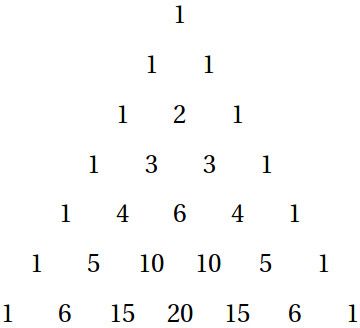Triangular number
The triangular numbers are the numbers ![]() which are the sum of the first
which are the sum of the first ![]() natural numbers from
natural numbers from ![]() to
to ![]() .
.
Using the sum of an arithmetic series formula, a formula can be calculated for ![]() :
:
For example, the ![]() triangle number is
triangle number is ![]()
The formula for finding the ![]() triangular number can be written as
triangular number can be written as ![]() .
.
It can also be expressed as the sum of the ![]() row in Pascal's Triangle and all the rows above it. Keep in mind that the triangle starts at Row 0.
row in Pascal's Triangle and all the rows above it. Keep in mind that the triangle starts at Row 0.
The rather simple recursive definition can be easily found by noting that ![]() .
.
This article is a stub. Help us out by expanding it.










